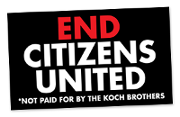Biblio
Filters: First Letter Of Title is B [Clear All Filters]
(1969). Business as a Game.
"Men down the line often tend to judge the boss with unrealistic severity—to expect perfection from him, complete rationality, absolute efficiency. Yet a little observation tells us that business is not carried out in a rational way....Wastefulness, shortsighted policies, impulsive moves, excessive use of trial and error methods, strange personal quirks in high places—all this is normal in business." (p. 71)
(1995). Breakfast at the Victory : The Mysticism of Ordinary Experience.
"When you need a teacher, the Hindus say, a teacher will appear. But we can't know in advance what we need to learn, else we would not need to learn it. Therefore, we won't know who our teachers are until we have been taught. As a result, every teaching is a surprise." (p. 40)
(1998). The Bad Attitude Survival Guide: Essential Tools For Managers.
"A consistent, knee-jerk negative response to bad news or negative circumstances is a common occurrence and creates an unhealthy organizational culture. Many organizations are well known for shooting the messenger. Some managers have such a high negative emotional response to problems or bad news, their employees learn to avoid their manager in times of trouble or crisis. This is a deadly organizational circumstance because information that frequently could serve to eliminate a problem or stop a small crisis from escalation isn't shared up the ladder, as lower-level employees refuse to expose themselves to the inevitable wrath. The price the organization pays for allowing this negative culture is incalculable." (p. 79)
(1997). Business Law.
(1994). Built to Last: Successful Habits of Visionary Companies.
"When we began our research project, we speculated that our evidence would show the visionary companies to be great places to work (or at least better places to work than the comparison companies). However, we didn't find this to be the case—at least not for everyone." (p. 121)
(2004). The Brothers Karamazov.
(1922). The Brothers Karamazov: a novel in four parts and an epilogue.
"He did no one any harm, but 'Why do they think him so saintly?' And that question alone gradually repeated gave rise at last to an intense, insatiable hatred toward him. That I believe was why many people were extremely delighted at the smell of decomposition which came so quickly, for not a day had passed since his death." (p. 352)
(2006). Build Your Own AJAX Web Applications.
(2010). The Blame Game.
"Our findings showed that blame was contagious, but not among those who felt psychologically secure. So try to foster a chronic sense of inner security in order to reduce the chances that you'll lash out at others."
(1996). Bully in Sight: How to Predict, Resist, Challenge and Combat Workplace Bullying.
"Stress can be defined, albeit rather vaguely, as any form of physical, emotional, or psychological pressure, and its endemic presence in the modern workplace probably owes much to insecurity and coercion.
An alternative view of stress is a consequence of the degree to which people feel they lack control of themselves, their situation, and their life. If a person feels they cannot influence or control events in their life, they will feel anxious, and hence feel insecure and afraid." (p. 174)
An alternative view of stress is a consequence of the degree to which people feel they lack control of themselves, their situation, and their life. If a person feels they cannot influence or control events in their life, they will feel anxious, and hence feel insecure and afraid." (p. 174)
(1987). Barron's Dictionary of Business Terms.
"Management Style: the leadership method a manager uses in administering an organization. For example, it may be said a manager has a very informal style, which signifies that the manager does not practice close supervision and believes in open communication." (p. 342)
(2005). The Big Moo: stop trying to be perfect and start being remarkable.
"Remarkable artists are always trying to find ways to put their own signatures on their work. They try to tell their own story. They simply can't perform like everyone else. The message: Be like an artist. Better still, be an artist." (p. 71)
(1989). Before It's Too Late: Employee Involvement, an idea whose time has come.
"When I started working in employee involvement I was completely unaware of the psychological implications. But then we began to observe behavior changes of the workers, and began to hear comments from their friends and spouses. We were experiencing a dramatic and powerful change that extended beyond the confines of the workplace. We were dealing with a concept that was affecting the whole person.
It was then, and only then, that we realized how tragic it is when a management system doesn't understand the need for recognition, for self-actualization, and job enrichment...and doesn't understand that how we treat people will largely determine how they respond and perform." (p. 85)
It was then, and only then, that we realized how tragic it is when a management system doesn't understand the need for recognition, for self-actualization, and job enrichment...and doesn't understand that how we treat people will largely determine how they respond and perform." (p. 85)
(2000). Beowulf: A New Verse Translation.
(1996). Brutal Bosses and Their Prey.
"Bosses can make or break your day, your month, your year, your career. They have the power to ease or intensify adverse reactions to normal organizational stress. Empirical evidence broadcasts a consistent message: People reporting to more considerate bosses are less likely to suffer the ravages of burnout and more likely to experience work satisfaction than those reporting to less considerate bosses. In fact, as an innoculation against burnout, respect from a boss offers more protection than salary. Conversely, there is solid evidence that working for unsupportive bosses is associated with higher levels of anxiety, depression, and even heart disease." (p. 69)
(2003). Beyond Blame: How to Resolve Conflicts with Friends, Lovers, and Co-Workers.
"Avoid even the appearance of blame. No surprise here. This is, after all, the main theme of this book....
"There is nothing that will sabotage any strategy you employ more quickly than the mere suggestion that you are blaming the other person for the troubles. Equally detrimental is for you to accept blame that is directed toward you. This compliance tactic (perhaps even driven by the misguided belief that one person can be at fault in a conflict) will only encourage further fault-finding in the future." (p. 223)
"There is nothing that will sabotage any strategy you employ more quickly than the mere suggestion that you are blaming the other person for the troubles. Equally detrimental is for you to accept blame that is directed toward you. This compliance tactic (perhaps even driven by the misguided belief that one person can be at fault in a conflict) will only encourage further fault-finding in the future." (p. 223)
(1990). Beware the Naked Man Who Offers You His Shirt.
"You'll find politics in every office, and I'm including a two-person hot-dog stand in my definition of an office. People are always jockeying for position, and the kinds of people I'm talking about are the only three kinds I'm certain are out there: sharks, shark-bait, and shark-proof. Which one are you?" (p. 49)
(1995). Building Community: The Human Side of Work.
"The best organizations consider the unique characteristics of each person: the needs of some for stability and others for variety; the needs of some for latitude and others for structure; the dependable delivery of some and the creative ideas of others; the open-mindedness of some and the rigid allegiances of others. What is consistent is that all people are treated with respect and dignity."
(C)2014 CC-BY-NC 3.0, workcreatively.org











 ]
]